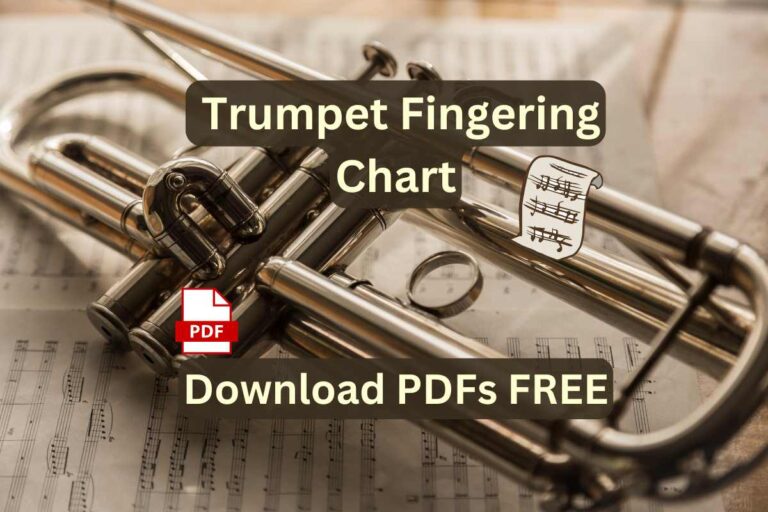35 Band Instruments: Full List for School & Rock Beginners 2023
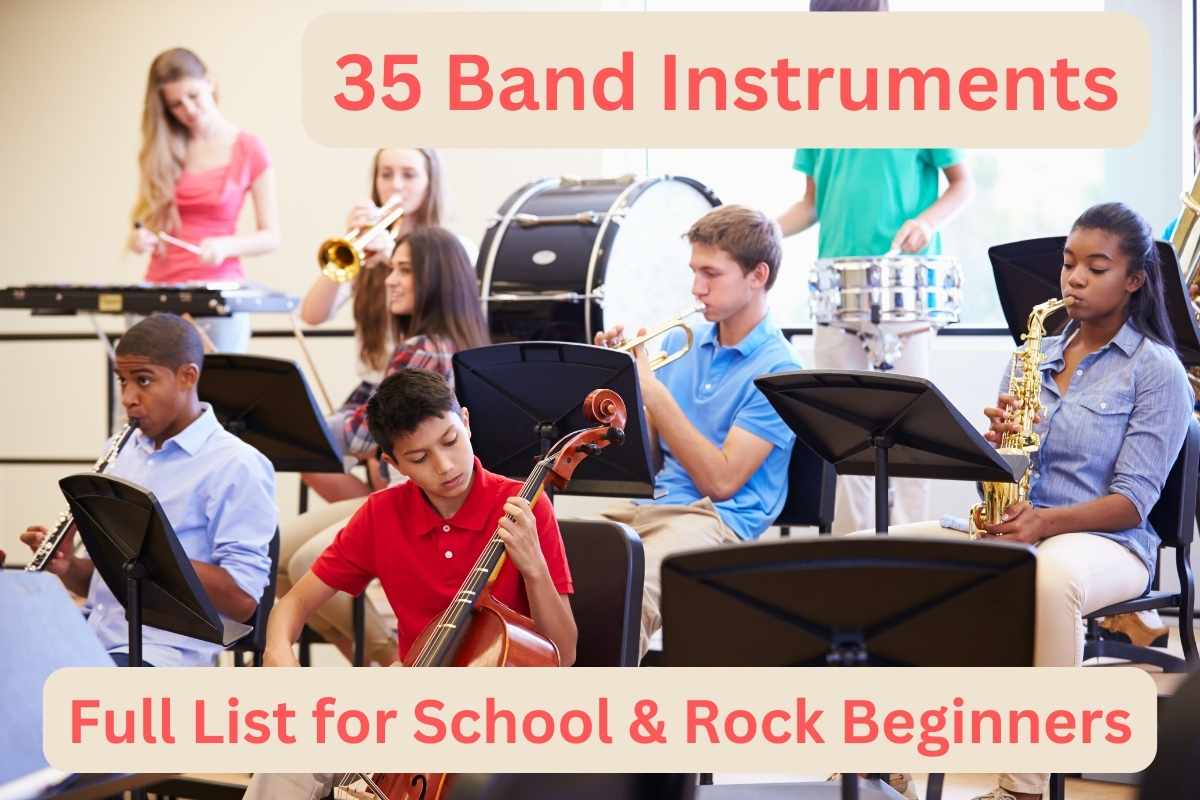
Have you considered joining a band but weren’t sure which band instruments to choose? Or perhaps learning an instrument has always been your goal, but you don’t know where to start? Below I provide a complete list of 35 band instruments suitable for beginners starting out in 2024!
No matter your experience level in music, this list offers something for you — whether that means being completely new or a performer looking for new instruments to start. From classic band instruments like clarinet and trumpet to cool electronic options — there’s sure to be something that fits.
What Are Band Instruments?
When I think of band instruments, my brain often imagines of musicians playing different instruments together in a band or a group — marching bands, concert orchestras, jazz ensembles or rock bands!
Each band instrument brings something distinct and interesting to the music.
These band instruments come in all sorts of shapes, sizes and playing techniques — some I’ll probably never could play!!
Have you been at a concert or school band gig and been curious to know more about each instrument being played? Let’s dive in, answer all those questions and more!

Band instruments can generally be divided into four main groups: brass, woodwind, percussion and sometimes — strings.
Orchestral and Concert School Band Instruments List
The world of music is huge and I find one genre iconic — orchestral!! Orchestral is like the ancestors of all genres!
Nothing quite matches up to live orchestra performances for their grandeur and energy. These pieces truly stand the test of time — some even from the Medieval era!!
Orchestras are large groups of musicians who play classical music together under one conductor. I have you covered here with a complete list of 35 band instruments — all make up orchestral and concert band instruments.

Are you a student looking for instrument lists for elementary, middle and high school band programs? Don’t worry — I’ll hook you up with the school band instruments list for each program!!
I will provide you with a list of marching band instruments! And for any rock music lovers – just like me – I also list beginner rock group instruments!
Right, let’s get down to business! Let’s quickly take a look at all 35 band instruments, beginning with brass ones!
Brass Family – Most Popular Band Instruments
Let’s talk about brass instruments now. Brass instruments have been part of concert bands for centuries!!
Typically constructed of brass (sometimes silver or gold) — these band instruments produce sound when lips vibrate against a mouthpiece.
Why do concert bands have brass instruments? Because brass instruments boast bright and bold tones, providing melody lines or solo opportunities.
Played softly, they create a tone that adds dimension and warmth to the soundscape.
1 Trumpet
The trumpet is an instrument with a long, slender body that curves into a bell at its end. A trumpeter blows air into a mouthpiece using three valves to alter pitch.
Starting to play melodic instruments like trumpet is rewarding and motivating for beginners — you will set yourself apart in any concert band setting!
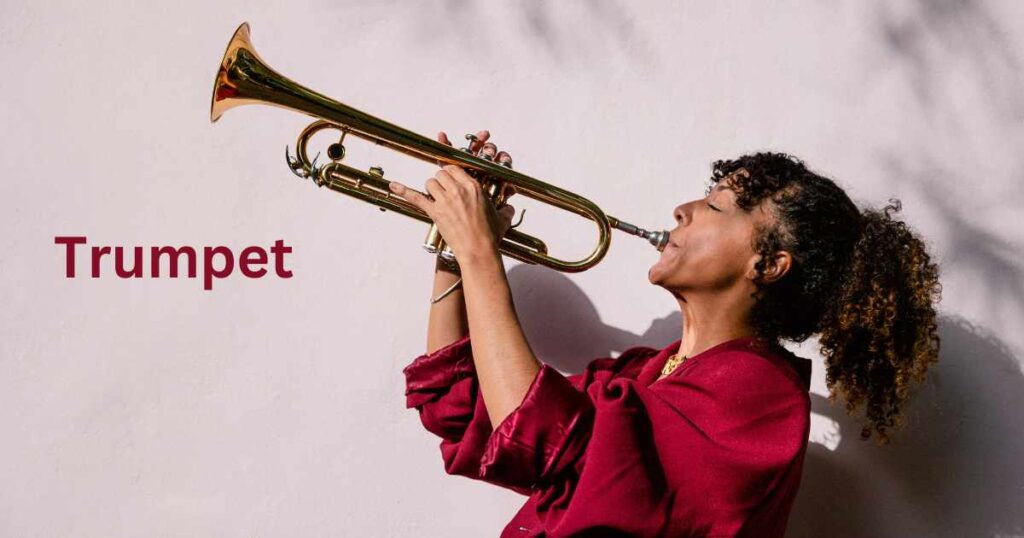
Trumpeters are in demand for concerts and gigs — you’ll find opportunities to join many ensembles!!
An accomplished trumpet player has a good breath control, embouchure (how they use lips and mouth to play) and agile fingers.
Ready to dive right in? Check out my post featuring 11 Best Beginner Trumpets of 2024!
2 Piccolo Trumpet
A piccolo trumpet is smaller and pitched one octave higher than a regular B-flat trumpet — making it suitable for high-pitched melodies and solos.
A piccolo trumpet resembles a regular trumpet with a shorter lead pipe and smaller bell sections.
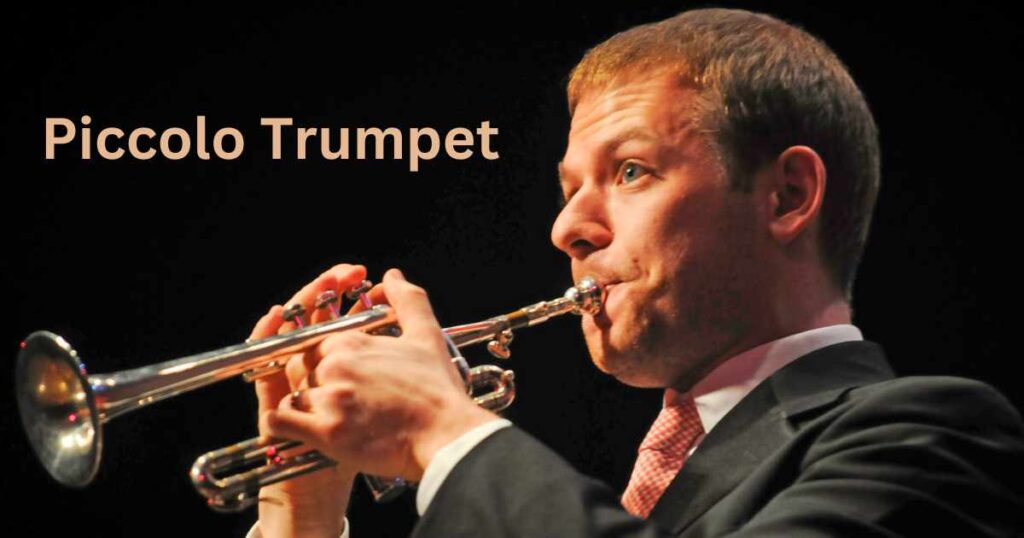
Higher pitches add energy to a performance like no other brass instrument can!! A piccolo trumpet is often the star of the show — piccolos deliver fantastic solos!
One drawback of playing the piccolo trumpet — the difficult sound production and tonality – particularly for beginners just starting out.
Need some motivation? Check out my post, featuring 11 Legendary Trumpet Players with amazing video performances!
3 Tenor Trombone
The trombone is a brass instrument with a mouthpiece, tubing, slides and bell. What sets the trombone apart is its sliding mechanism instead of using valves like the trumpet.
Players can alter the pitch by shifting back and forth on a slide. The trombone’s slide mechanism offers wide dynamics — making this instrument super flexible across genres!
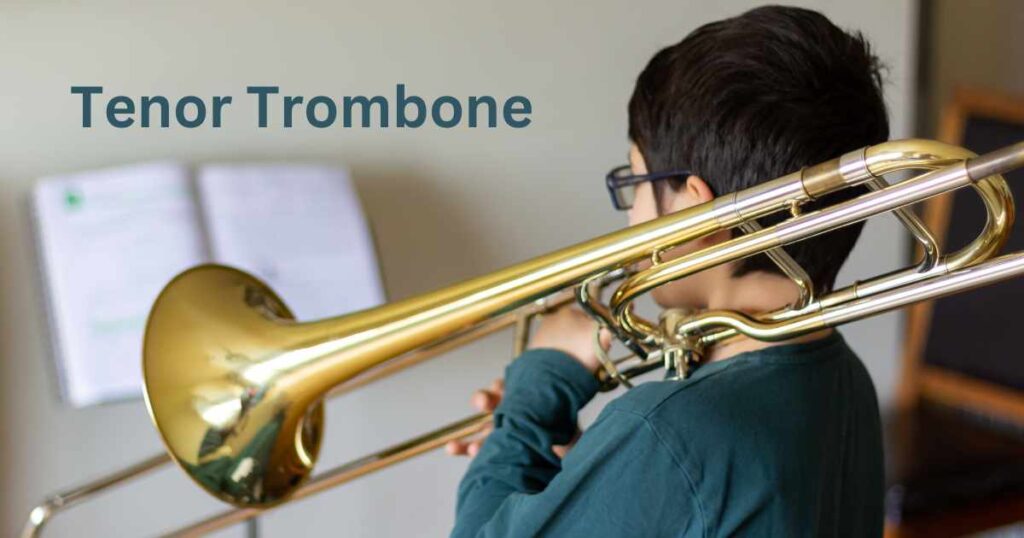
The pitch ranges from low and growly, almost shaking your ears, to high and piercing notes — you’ll be impressed!!
Curious to learn more? Check out my post on Tenor Trombones: Range, Parts and Top Models in 2024
4 Bass Trombone
The bass trombone is an expanded version of the tenor trombone, sporting a larger bell and wider bore — the tubing diameter. These modifications make it produce lower pitch and richer sounds!!
These band instruments typically feature one or two rotary valve attachments to adjust the pitch. Bass trombonists provide the concert band with its foundation — they bring in low-end resonance!

Bass trombones add depth, warmth, and richness to a harmony that other instruments cannot match.
A bass trombone may not be ideal for beginners — its size and weight (as well as breath control) make mastering all positions challenging.
Here you’ll discover the Top 5 Bass Trombones Of Most Trusted Manufacturers
5 Tuba
Tubas are like mini sound factories! Their big, curvy bodies combine elements to produce their signature sound.
A tuba’s body consists of an extended tube-shape bent into an oblong form.
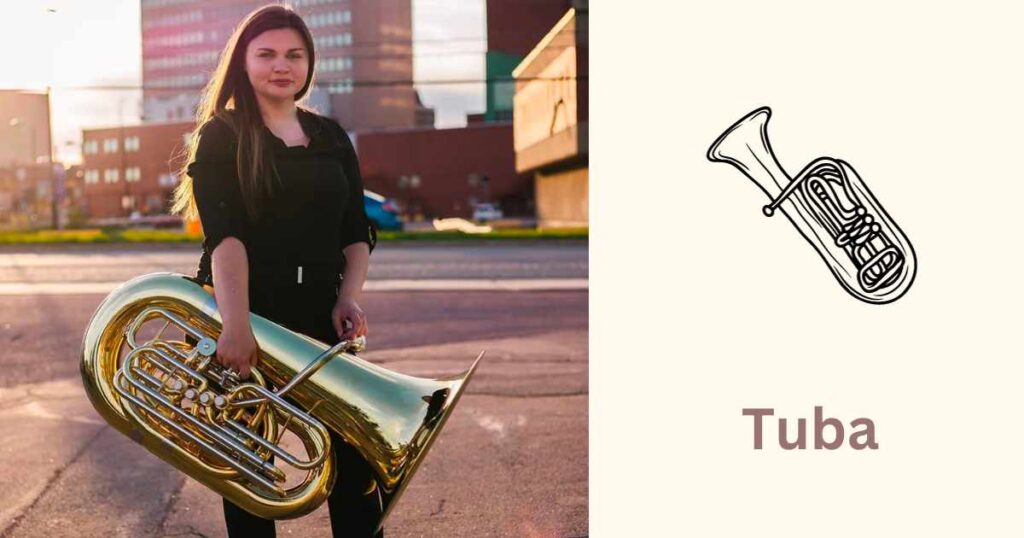
The leadpipe directs sound from its mouthpiece into the body via valves (typically three to six) for pitch alterations. It ends with a large bell for maximum projection.
Concert bands simply wouldn’t be complete without tuba!! Brass sections rely on it for balance and depth of sound.
Beginner musicians often find the tuba challenging. You’ll need time and persistence to master breath control, embouchure and finger dexterity.
The tuba can be cumbersome to carry around and play for performances at school and gigs.
But that should never stop budding musicians from giving it their all!
7 French horn – Horn in F
The French horn has a brass, conical construction — its tube widens from mouthpiece to bell. It is pitched in F and has three valves.
Coiled tubing tightly wraps around an instrument to block sound waves and produce sound. The body twists through valves that enable pitch adjustment.
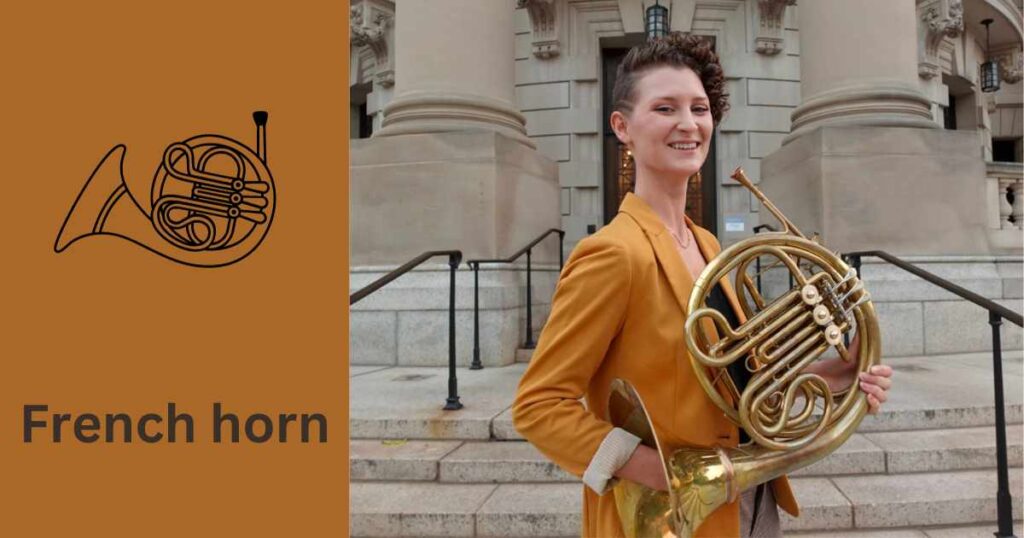
French horns are relatively lightweight concert band instruments (compared to tubas or bass trombones).
French horn players bring powerful emotion and depth to classical music with their expressive sound. They provide harmonic support, melody and countermelody in concert bands.
Mastering fingerings and embouchure techniques takes dedicated practice. Due to its niche nature, finding teachers or communities for learning tubas may prove challenging.
8 Mellophone
A mellophone sounds very similar to the French horn. Yet it has different tubing twisted around its body — instead of appearing like an enormous pretzel, it more resembles that of a giant trumpet!
A player plays a mellophone while marching — its bell facing forward to project its sound into the audience!!
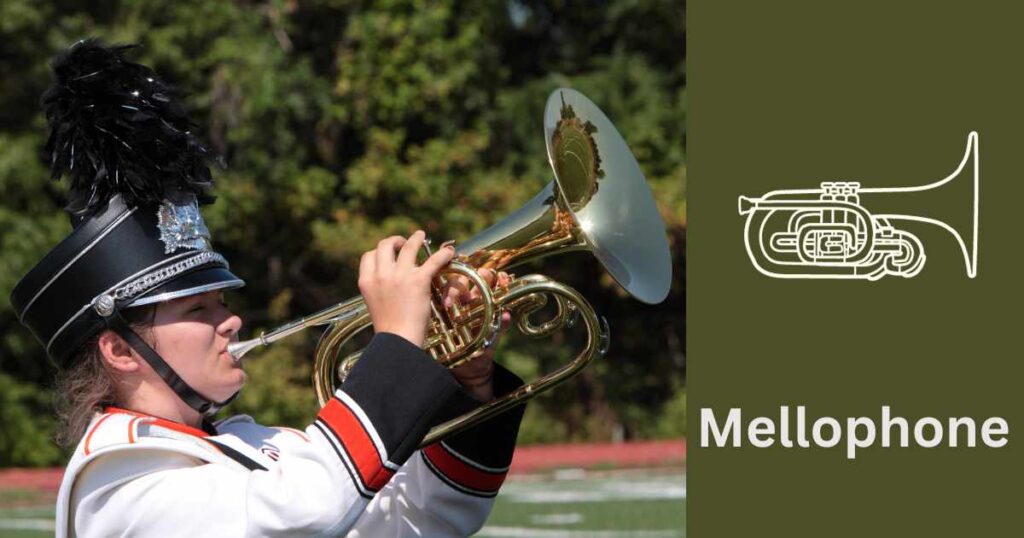
Mellophones feature smaller bell sections than French horns, making them lighter and easier to play. Mellophone mouthpieces are also smaller than F horns — this makes producing sound easier!
A mellophone offers volume control with its unique, soft tone. Marching or concert bands use it for playing more delicate musical pieces.
9 Euphonium and Baritone
Although both low brass instruments, the euphonium and baritone don’t sound identical…
The baritone horn and euphonium are similar in size and tonal range. Each is about nine feet of tubing — both are in B flat key.
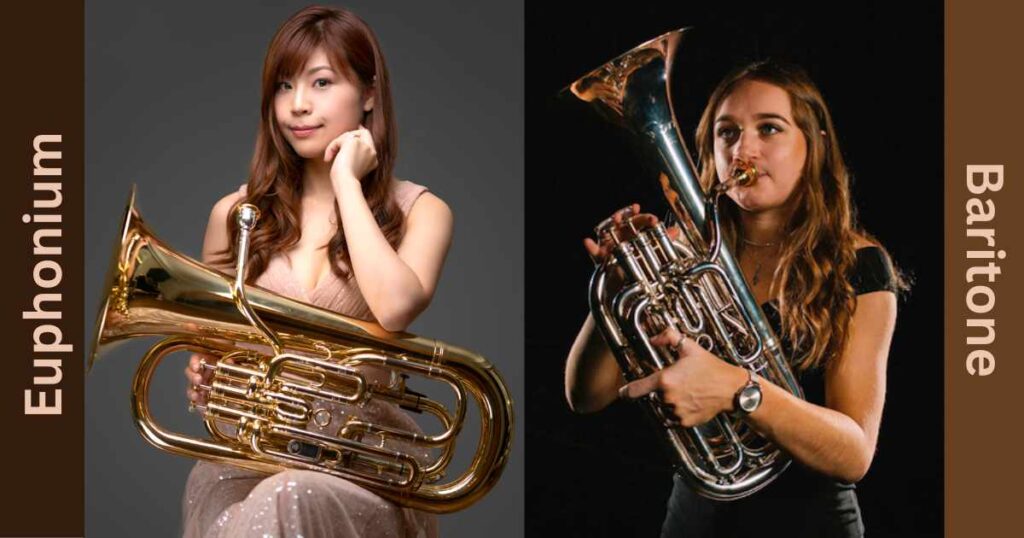
Baritone horns typically consist of three valves, while euphoniums have four.
Euphoniums feature larger bore sizes and cylindrical shapes for a brighter tone quality with faster response. Baritones have smaller bore sizes and conical shapes that give their sound a smoother, gentler character.
10 Flugelhorn
The flugelhorn is a brass horn with a wider shape and a larger bell (compared to the trumpet). It produces warm and soothing sounds due to its conical bore.
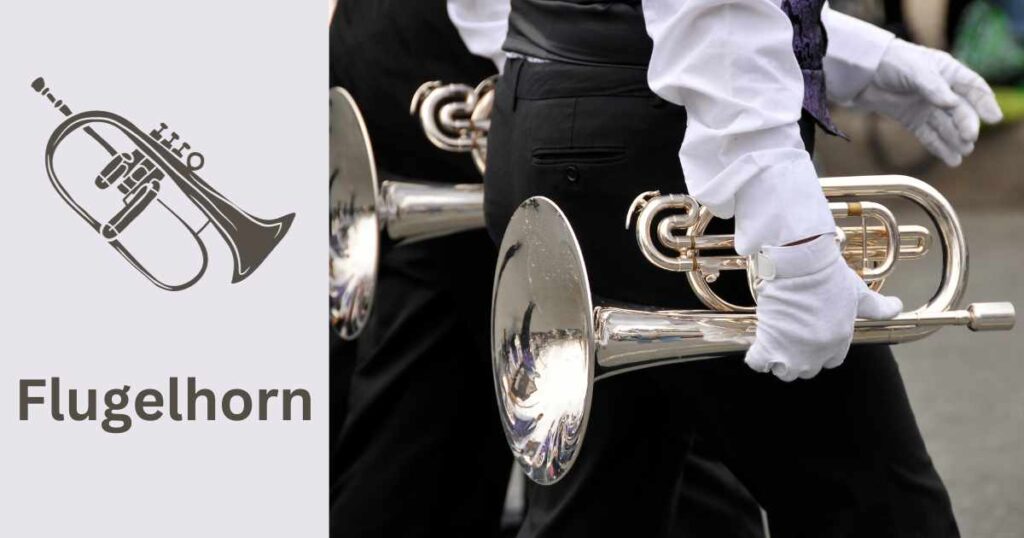
Flugelhorns offer melodies with distinct legato style — great for jazz and classical performances!!
I hear this horn mostly in ballads, slow songs and ensemble pieces due to its soft yet gentle sound. It contrasts sharply with trumpets and other bright brass instruments.
11 Cornet
Cornets resemble trumpets but possess a mellow tone.
Cornets feature large tubes coiled up and ending in flared bells. They have conical bores with piston valve mechanisms.
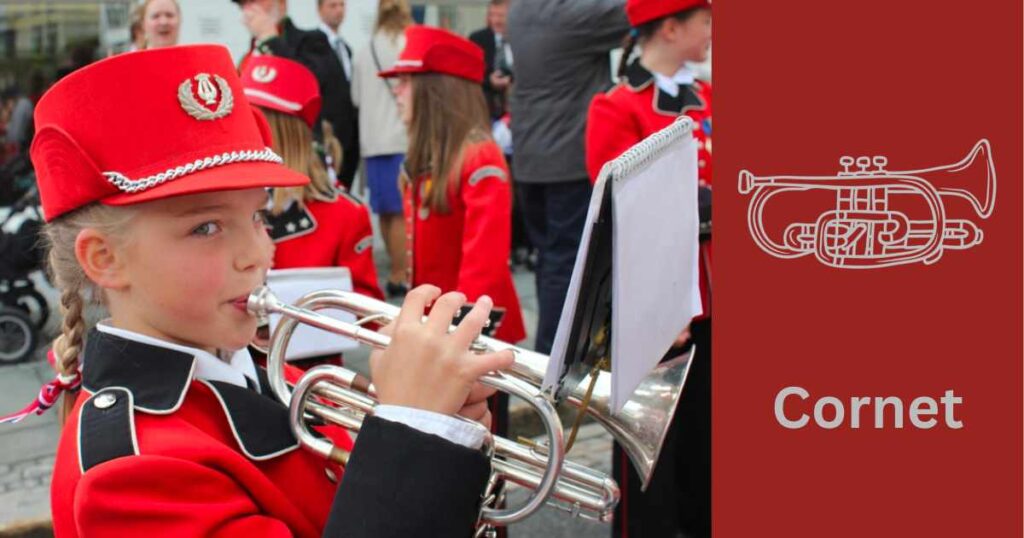
Cornetists in concert bands generally play melody or countermelody roles within the middle register.
12 Bugle
A bugle is a brass family instrument without valves.
Bugles use air control for pitch modulation instead of valves to produce different notes (harmonic series). That’s why you can play a limited range of notes.

Bugles boast a clear and pure sound, which enables it to play melodies. It adds emotion and drama into music compositions. You hear its piercing tones even from miles away in marching and military music.
Woodwind Family Instruments
Woodwind instruments differ from brass instruments. Instead of using vibrating (buzzing) lips to produce sound, woodwind instruments use either a reed or the performer’s breath as the source!!
There are two categories of woodwind family instruments — flutes and reeds.
Woodwind instruments provide melodies and harmonies (brass instruments provide accents). Woodwinds add color and texture, counterbalancing brass’ deep sound.
Check out my post on 10 Members Of The Flute Family!
13 C Flute
A flute comprises three main parts — the head joint, the body and the foot joint.
The keys on both body and foot joint allow players to open or close flute tone holes (keyholes) to create different notes.
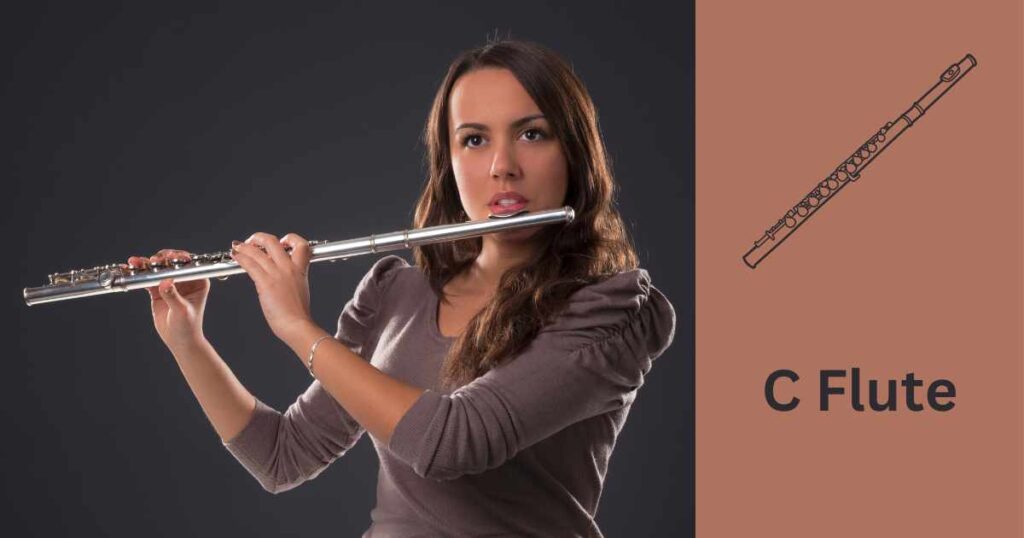
A concert flute is tuned to C and has the potential for up to five octaves — all depends on its player skill!! Playing flute doesn’t require reeds — simply blowing across an embouchure hole creates sound.
One of my favorite woodwind instruments. I see it playing across orchestras, jazz and concert bands, and even pop music!
14 Piccolo Flute
As its name implies, a piccolo flute is an extremely small version of the c flute — typically just half as big and tuned an octave higher!!
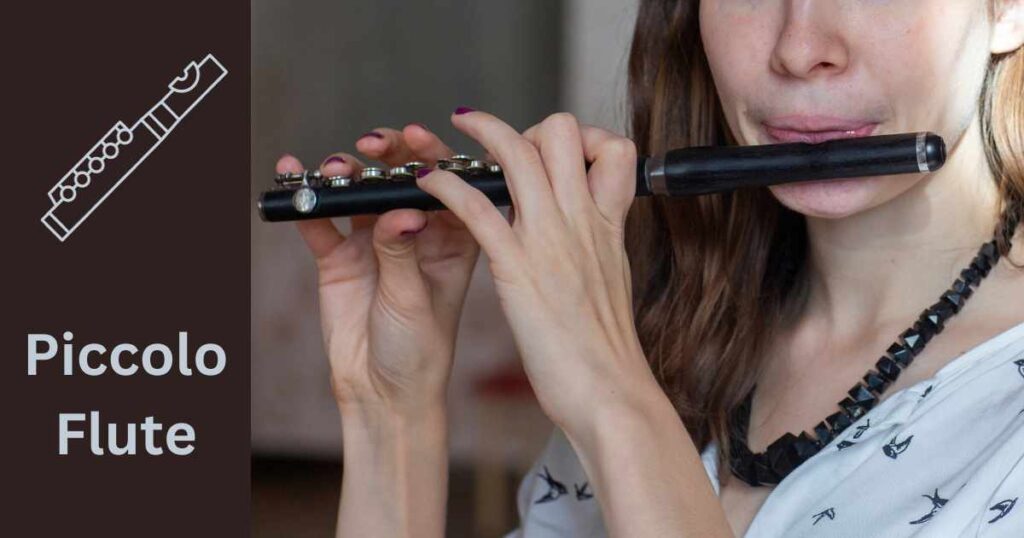
It has a similar construction, but the joints are shorter for brighter and sharper sound compared with the concert flute.
A piccolo pitches three octaves above middle C — one of the highest-pitched instruments in any concert band!! Due to its smaller body, playing a piccolo flute requires greater finesse.
Check out these 15 Common Types of Flutes!
15 Saxophone – Alto | Tenor | Baritone
The Alto Saxophone is the most commonly played and smallest of the three. The Tenor Saxophone is larger, and the Baritone Saxophone is the largest!!
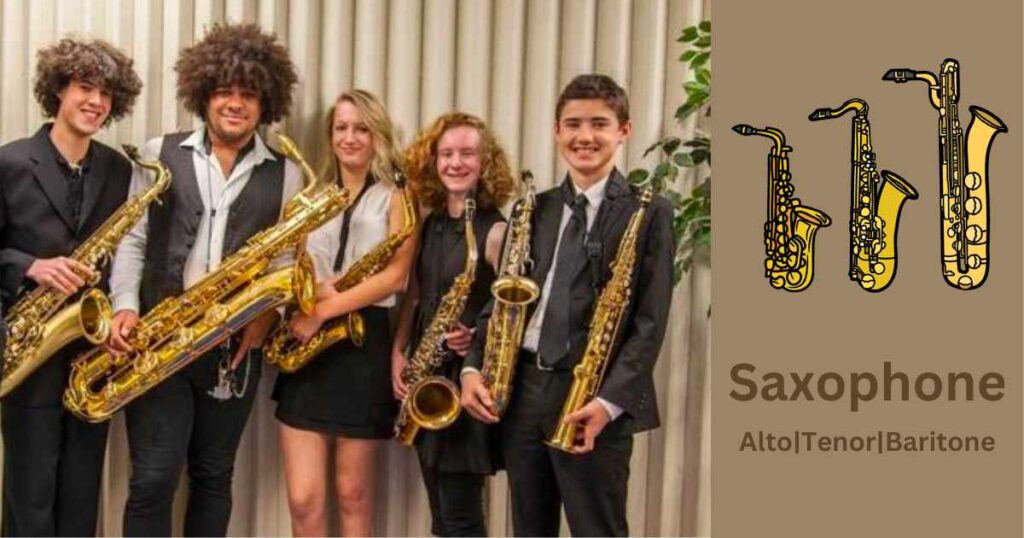
Alto Saxophones are the go-to choice for beginners since they’re easier to handle. The saxophone has several components — mouthpiece with its reed, neck, body, and keys.
Saxophones have a broad range and pitch, suitable for jazz, R&B and soulful blues! They have an amazing and captivating sound — that’s why we all love saxes!!
Saxophones produce memorable solos in every concert band they join and lead them with charisma.
16 Clarinet
Clarinets are beautiful woodwind instruments featuring one reed and a cylindrical bore. Clarinetists utilize different playing styles — legato, staccato and vibrato.
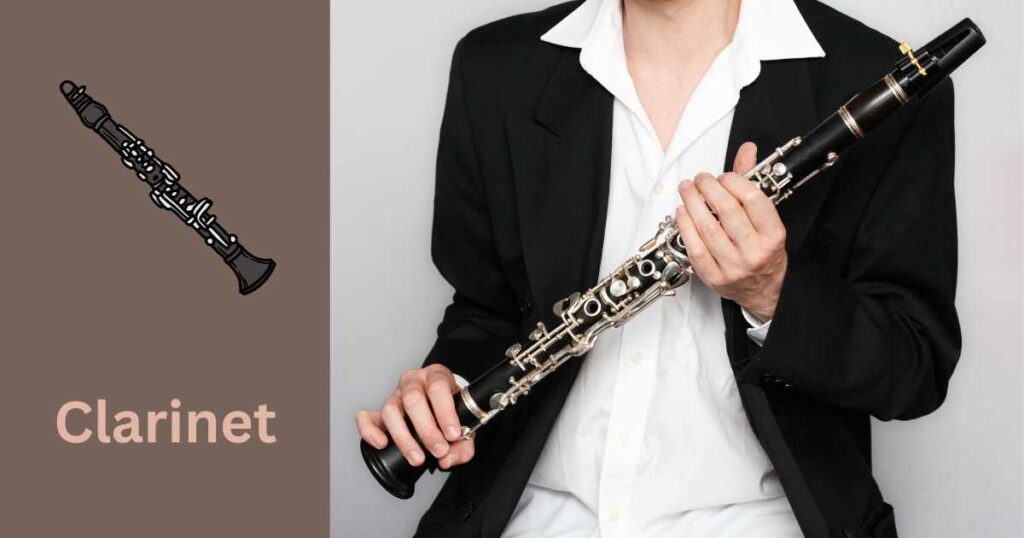
Clarinets are known for their soft and melodious tone tuned to the B flat key. Today, this instrument is becoming ever more popular!!
Starting out low at E3 in the lower register — its range spans three octaves up.
17 Oboe
The oboe is an exceptionally flexible instrument. It plays soft, gentle melodies as well as fast runs with precision!! Oboe players are in high demand, offering opportunities to perform with ensembles and orchestras.
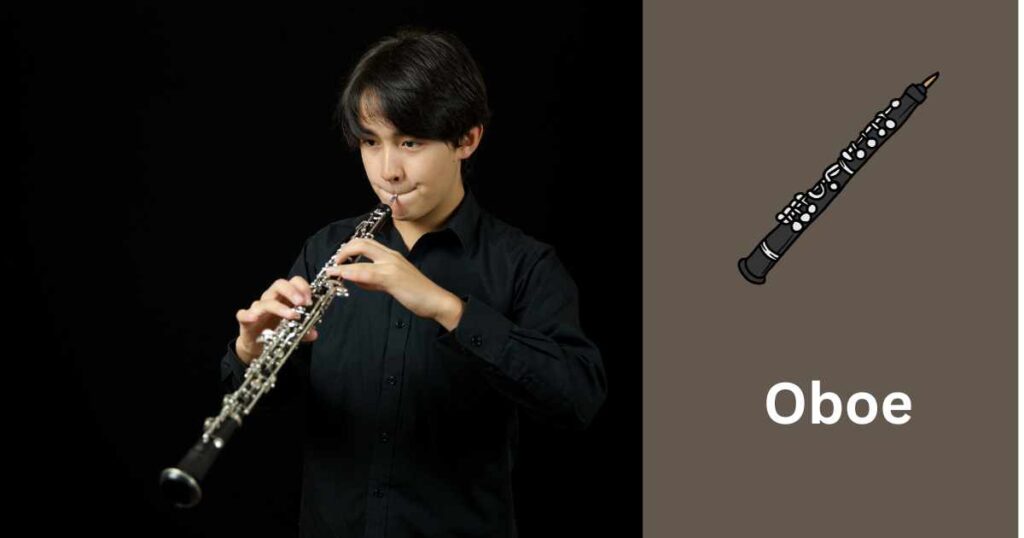
Chamber music, operas and ballets use the oboe for its beautiful tone. Its sound adds drama in slow, lyrical pieces — and helps set an atmosphere!
An oboe is basically an instrument made of thin wood with metal keys attached. Oboe’s reed manufacturers use cane or synthetic materials for improved sound production.
Oboe players give special care when maintaining the body made from wood and regularly replacing its reeds.
18 Bassoon
Bassoon solos often stand out — especially those performed to classic pieces of Mozart or Beethoven!!
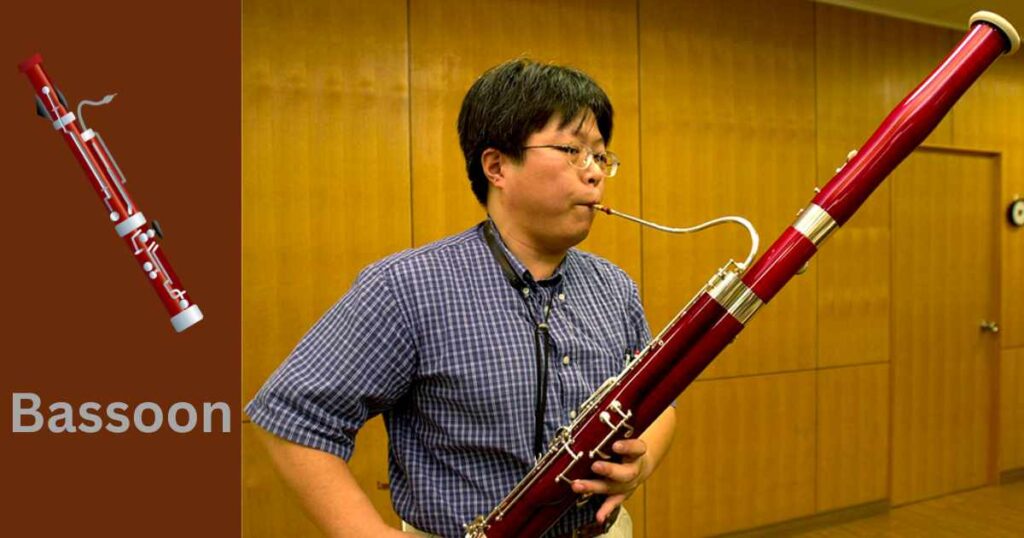
One of its signature features is its double reed. Basically, you take two pieces of cane, tie them together with string and scrape into special forms that produce sound waves.
When it comes to pitch, the bassoon is a bass wind instrument due to producing lower frequencies.
Within a concert band, you’ll find it behind other low-pitched instruments such as tuba and trombone.
Percussion Instruments
Percussion instruments include anything that produces sounds when hit, shaken or scraped.
They provide music with a rhythmic core!!
There are two categories of percussion instruments – those producing melodic tones (pitched) and those without (unpitched). Pitched percussion instruments produce definite pitches — notes.
Unpitched percussion doesn’t produce specific notes — it creates all manner of sounds with varied pitches, tones, and timbres.
19 Xylophone
A xylophone consists of wooden bars arranged in chromatic order, attached to resonators at either end and connected via strings.

Chromatic order means it’s organized like keyboard keys – from the lowest to the highest pitch – so it allows you to read sheet music while performing. A player uses two or four mallets to strike keys.
Rosewood and padauk wood species are two popular materials! Some xylophones use synthetic materials within wood construction.
20 Snare Drum
Snare drums have an extended drumhead stretched over an open cylindrical shell made of wood, metal or fiberglass. A drumhead uses plastic or animal skin and attaches securely to its shell with a lug system.
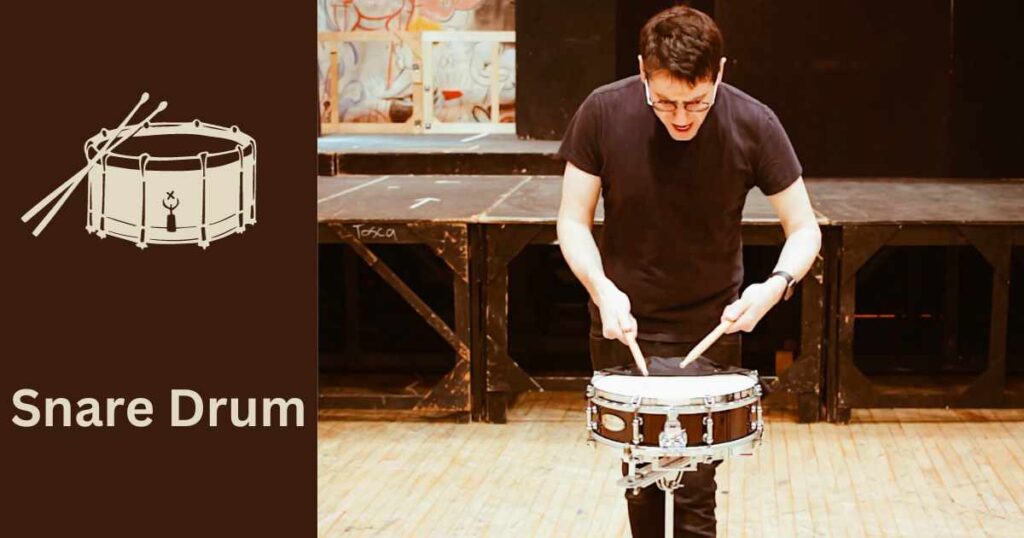
Snare drums have signature strings (metal wires) stretched across their bottom head — known as “snares.” These drums let staccato sounds for producing fast and precise rhythms.
Most marching bands tune and play drums in mid to high pitch for those energetic rhythms.
21 Bass Drum
A bass drum requires a few basic parts — wood or metal shells encasing two drumheads on both sides.
It’s the largest drum of any percussion section, usually measuring 18-32 inches in diameter.
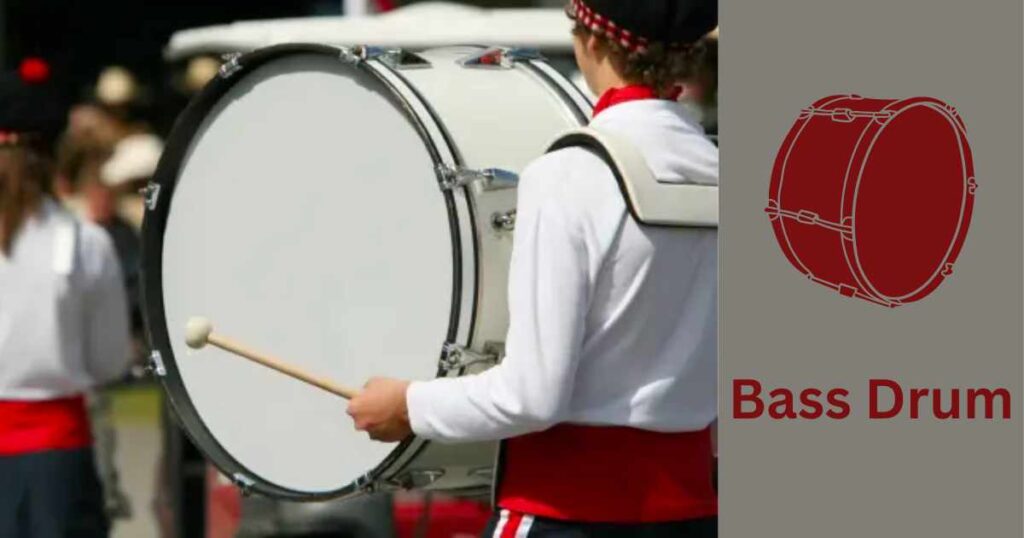
This large size allows the bass drum to create an audible and striking tone throughout a wide area.
Bass drums play an important role in keeping all concert band members on beat — without them, things would fall apart quickly!! Without consistent bass rhythm, music would fall flat…
Playing the bass drum doesn’t require technical proficiency, yet can still be physically demanding in a marching band setting.
22 Marching Quads – Tenor Drums – Timp Toms
Tenor Drums recently joined the marching band scene in the 1950s.
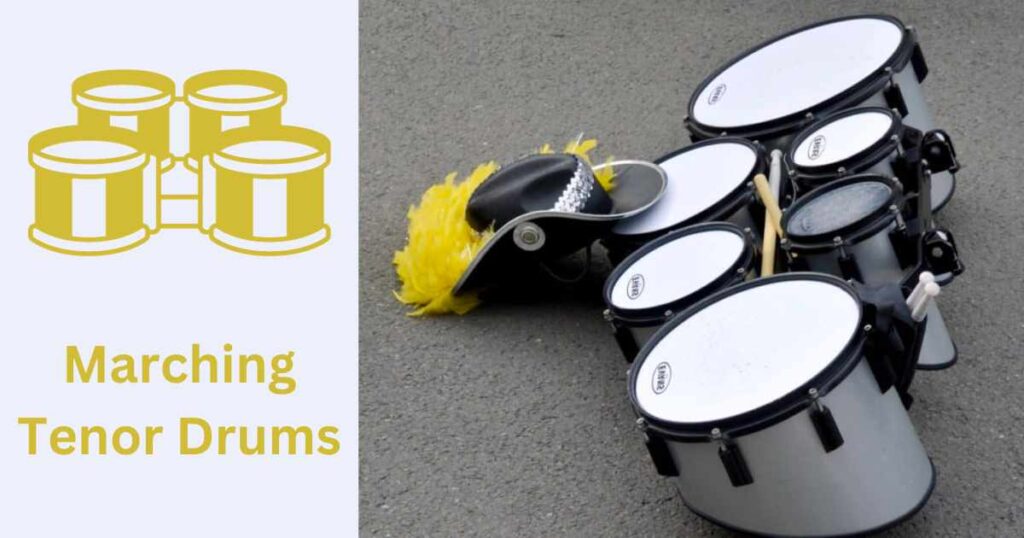
A Quads consists of four drums of 10″ up to 14″ inches in size. They’re attached by a harness worn by the drummer.
Each drum produces its pitch and adds up an incredible crescendo of sound.
23 Cymbals
Cymbals are thin metal plates or alloys that you hit with drumsticks, mallets or themselves to produce that metallic sound.
Cymbals with higher pitches tend to be smaller in size while those with lower pitches typically boast larger and thicker designs.
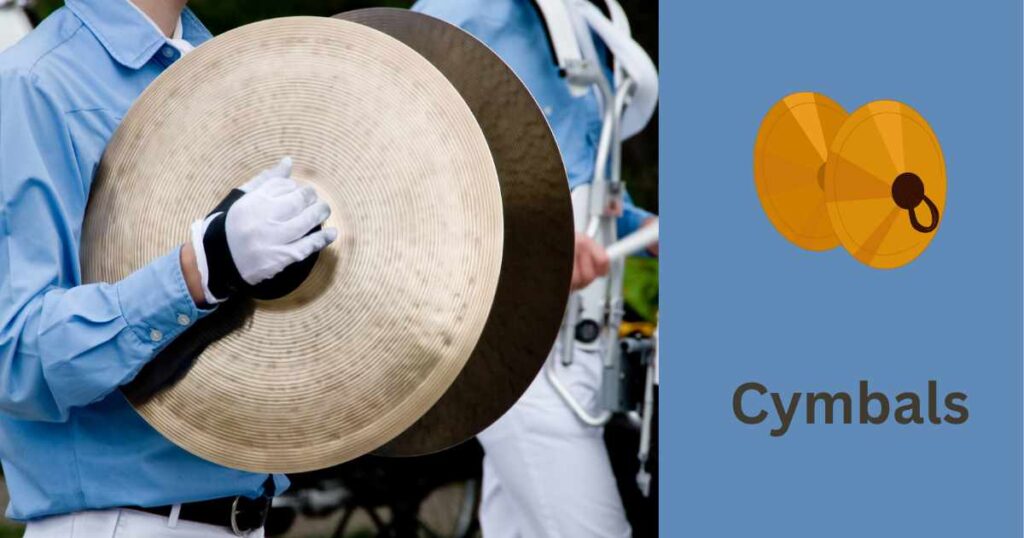
Cymbals come in sizes from 6 to 30 inches — 14-16 inch models typically used by concert and marching bands.
Sounds of cymbals add vibrance and excitement to music, creating dynamic performances.
24 Glockenspiel
Glockenspiel (German for “bell play”) is an instrument of metal bars of different lengths and widths connected together with strings or wire.
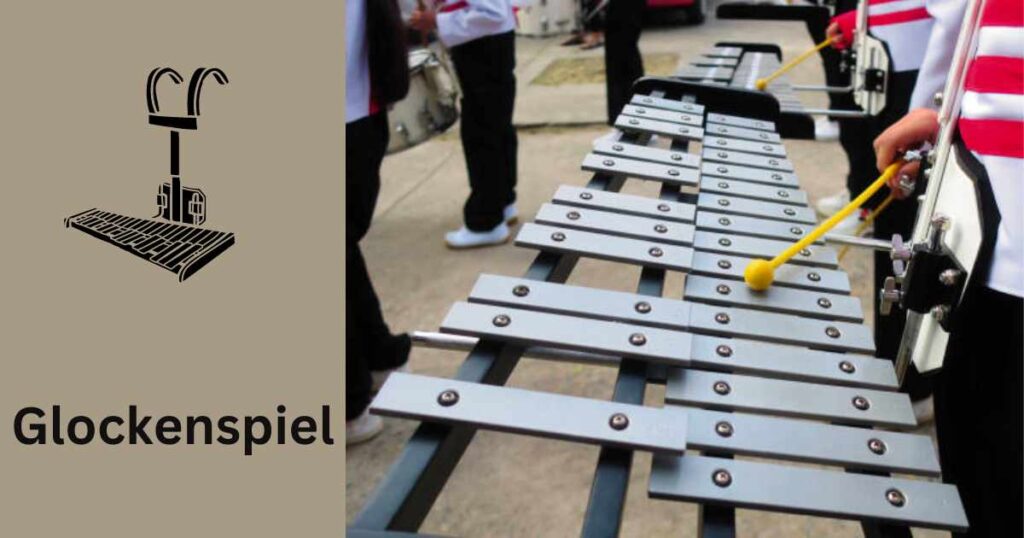
Each bar serves as an individual note — hit them with hard rubber or plastic mallets to generate sounds!
Orchestras, concert bands, marching bands, and some contemporary genres often use this percussion.
25 Vibraphone – Marching Bell Set
The Marching Bell Set is an innovative percussion instrument composed of several metal bars of various lengths that you strike with mallets to play.
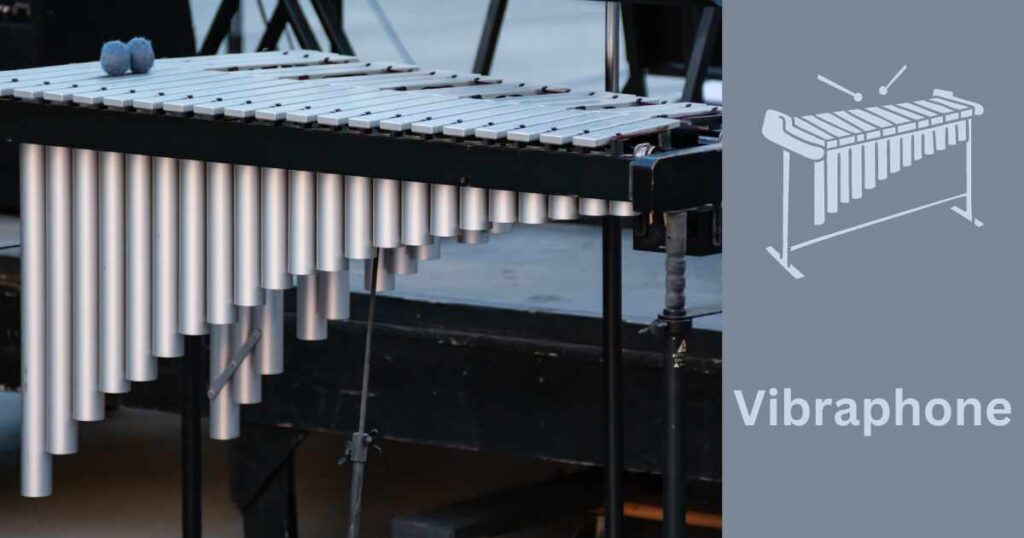
Bars (notes) are lined up from lowest to highest. These bars typically are in the key of C, starting with the lowest C and going up two and a half octaves.
Steel or aluminum bars come with resonators to amplify sound amplification and add an interesting sustain.
26 Timpani mallet percussion
Timpani drums come in various sizes, from 20 to 32 inches in diameter.
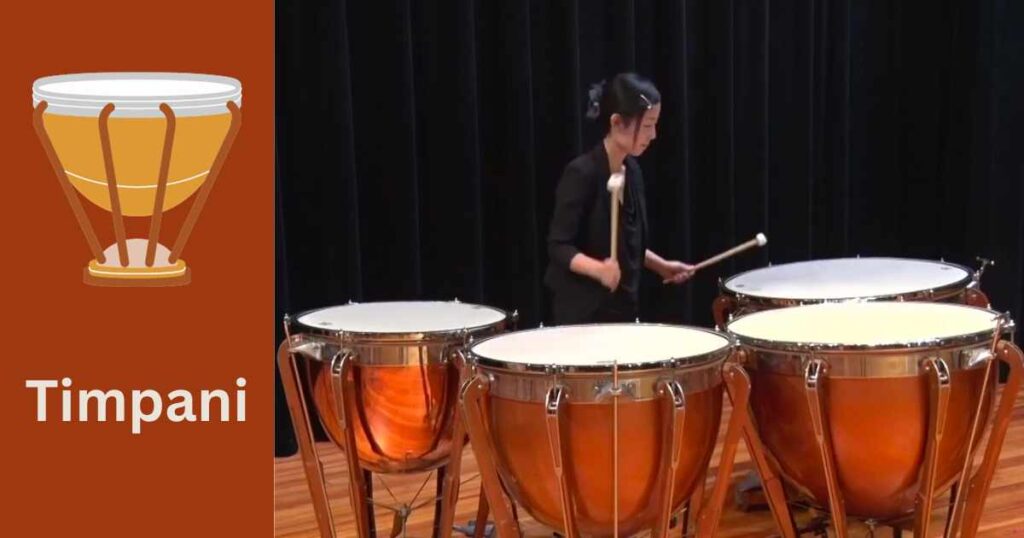
They’re basically metal or fiberglass bowls with stretched drumheads made from skin or plastic material over them.
Marching bands use timpani to keep to an exciting rhythmic tempo that can be heard for miles.
Playing timpani helps to develop rhythm and timing skills.
String Instruments
String instruments are like magic makers!! They produce sound by making those strings vibrate!
Strings add depth and warmth to a concert band’s sound. Strings often take lead roles in melodies and interest the public as a result!
Strings are rare among marching bands since they are hard to play while walking and require you to sit for comfort and efficiency…
…Not to mention they don’t project sound as loudly as brass instruments do!
27 Violin
The violin is a curved hollow wooden string instrument with four strings.

This instrument does not have frets — you can create different tones with vibrato and other techniques. You’ve gotta nail the perfect pitch with the exact placement of your fingers.
I find the violin to be very emotional — the strings create such beautiful music that moves my soul!!
Brass instruments simply outshout violins when it comes to projection — that’s why they don’t feature in Marching bands.
28 Viola
The viola is similar to a violin but larger and has deeper, richer tones. It has four strings and you play it using a bow.

Violas produce stunning sounds with warm and inviting tones that create beautiful music!!
This instrument’s lower pitch creates orchestras’ lower voices.
Violas bridge the gap between sopranos and alto — that’s why it’s called the “middle voice” in an orchestra.
29 Cello
Have you experienced the soothing vibes of a cello?
I find the cello one of the most beautiful-sounding concert band instruments — its deep and soulful sound takes me away to another realm!!
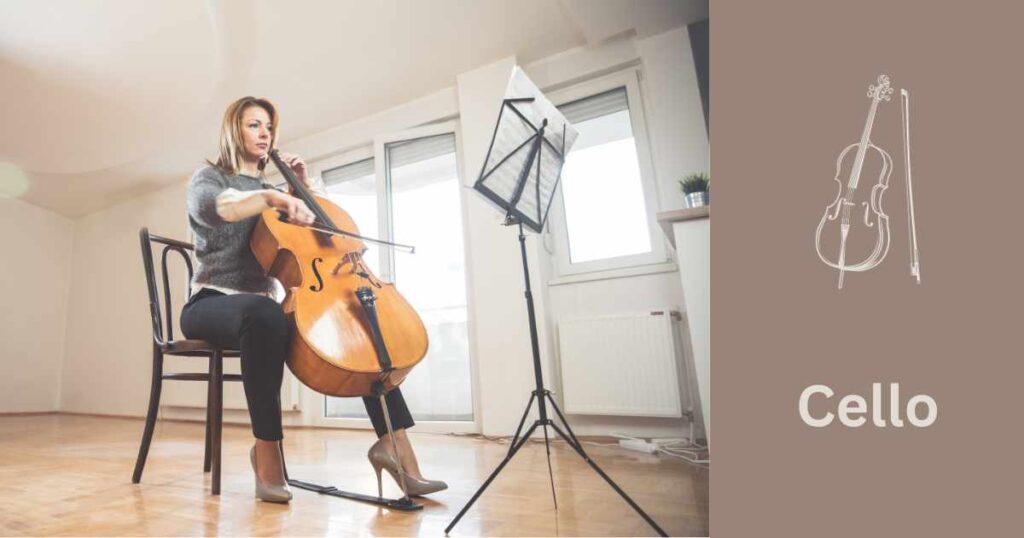
The cello is “the big brother of the violin.” You sit down and use a bow to create sounds. It’s about four feet high and weighs 11 lbs (5 kg).
The cello has a wide, four octave range. It’s lower in pitch than violin or viola — great companion in an orchestra!!
30 Double Bass
Double Basses are the deepest-sounding strings — producing notes so low they shake me from within!!
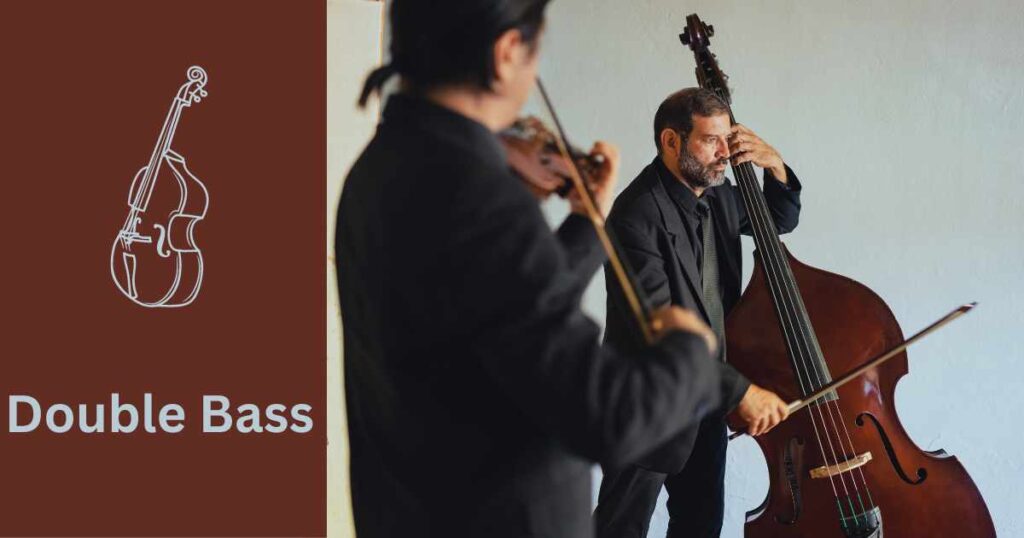
A double bass (also known as the Contrabass) stands out with its massive body and distinct sound.
Low-pitched bass sounds support the foundation for ensembles. It provides the overall vibe with a solid structure.
Contrabasses come in all sorts of sizes for beginners — from miniature 1/8 sizes for young learners all the way up to full-sized basses for grown players.
Rock Band instruments
Rock band instruments are electronic devices that simulate the sound of traditional band instruments like drums, guitars, basses and keyboards.
These instruments resemble real instruments as closely as possible!!
Live rock band performances offer unforgettable live experiences! Their electrifying music creates an atmosphere perfect for creating memories to last a lifetime!
31 Acoustic Guitar
Acoustic guitars use only a soundboard to produce their sound. Hollow chambers amplify the sound coming through it.

A guitar has six strings; there are also seven and twelve-string versions. Strum the strings with your fingers or use a plectrum (guitar pick) to produce notes and chords.
Beginners might find playing an acoustic guitar to be quite painful at first; those strings can be especially tough on fingers! I still vividly remember all that discomfort!
One aspect of guitars is how portable they are — from park jam sessions to living room performances. Guitars are excellent solo instruments and great accompaniment in small-group settings or jamming sessions!
32 Electric Guitar
An electric guitar needs an amplifier to generate noise and make any sounds.
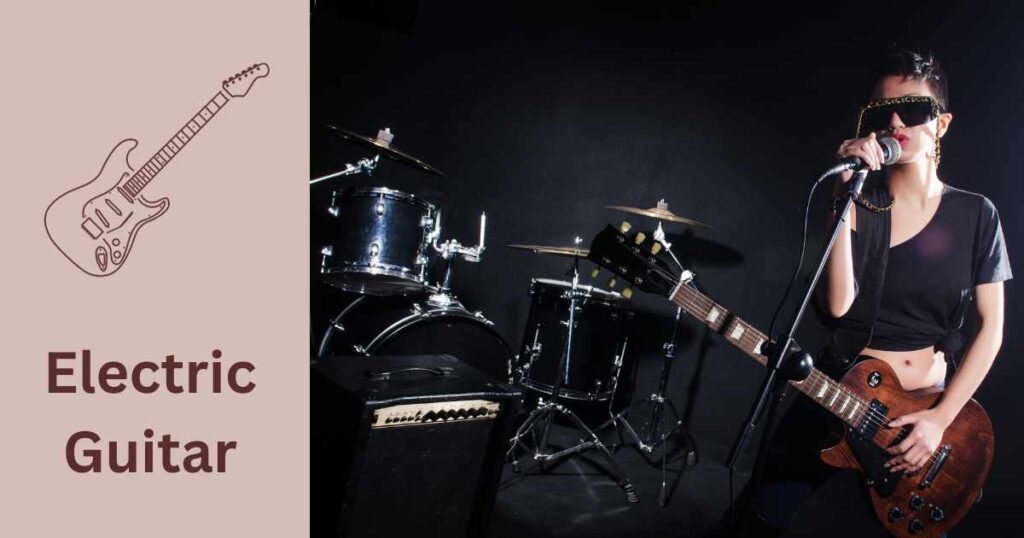
Pickups (of fingers) allow musicians to convert string vibrations into electrical signals. Electric signals travel to an amplifier to amp up its volume, making the signal louder.
Guitarists now have access to distortion, reverb, and chorus effects to experiment and explore!
33 Bass Guitar
A bass guitar resembles the regular guitar in many respects — four (most common setup) thicker strings give the lower sound pitch.
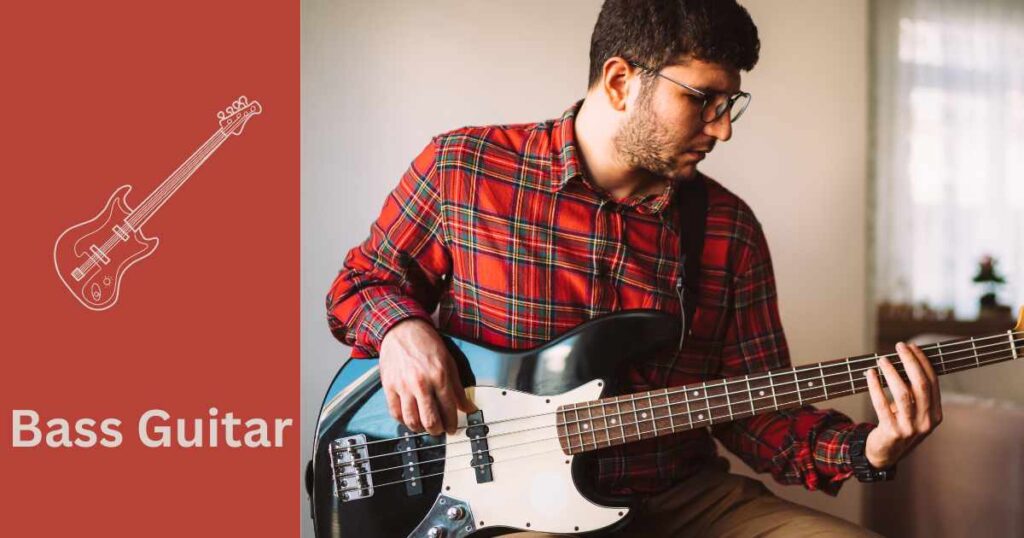
The bass guitar provides the low end and sets the rhythmic base for the band.
One of the great aspects of playing bass guitar is how easy it is to learn!!
34 Drum Set
A drum set (also called the drum kit) consists of various percussion instruments that you play together simultaneously with drumsticks or brushes. This kit has a bass drum, snare drum, tom-toms, hi-hat and cymbals.
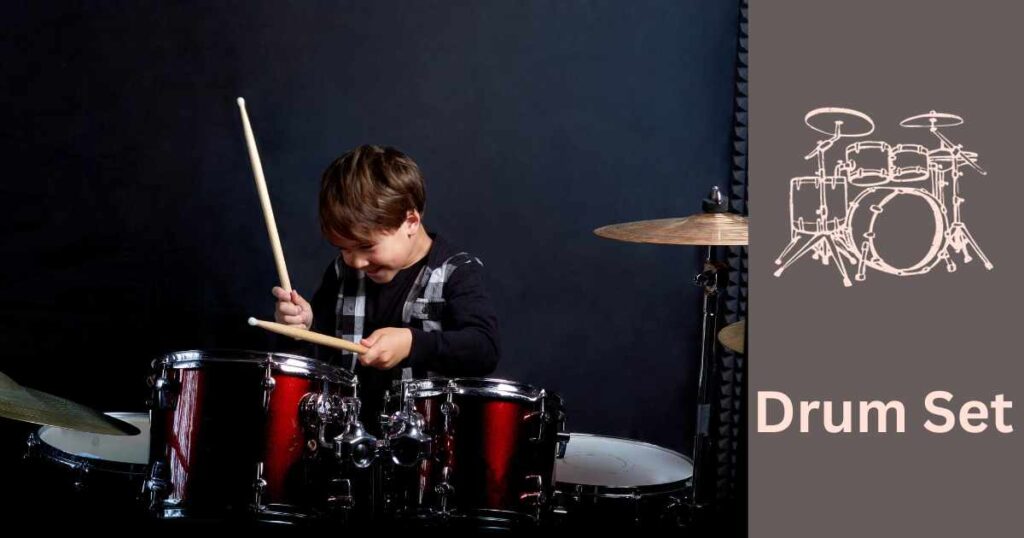
A drum kit provides rhythm and energy to any musical performance.
Learning drums is truly incredible!! It builds coordination, timing and creativity skills for children — It’s a wonderful stress reliever as well!!
35 Keyboard and Digital Piano
Keyboards are electronic band instruments that reproduce instruments such as pianos, organs, strings and synthesizers.

Digital pianos simulate traditional acoustic pianos’ sound and touch (with a weighted keyboard).
Digital pianos usually have 88 keys, like their acoustic counterparts; keyboards feature anywhere between 25 to 88.
Keys create melodies or harmonies that other band instruments can’t play.
Connect them directly to recording software for loop creation and cool sound effects!! Save them as music files for playback at any time!
Elementary Band Program
The elementary instrumental music program features eight band instruments:
- Flute
- Clarinet
- Alto and tenor saxophones
- Trumpet
- Trombone
- Euphonium
- Snare drums
These instruments come in any concert band program for young children as they’re the easiest to manage.
Playing concert band instruments doesn’t require much finger dexterity and learning — a kid of any age can pick it up quickly (six months for simple melodies). Parents can either purchase or rent an instrument for their kids to use.
Students and their band instruments quickly form close relationships. Students spend hours playing flutes or clarinets together while talking, snacking, giving them unique names, or decorating them with stickers or drawings. It is so charming — It makes learning all that much sweeter!!
The elementary program allows groups to explore band instruments like marimbas and guitars — often leading to a new concert band and relations! This experience creates amazing opportunities to form lasting friendships among classmates!
Middle School Band Instruments list
A middle school band program provides the ideal setting for those students with some prior instrumental experience (at least several years is ideal). Concert band directors focus on teaching fundamental music theory and technique principles as well as exciting music pieces — to add some fun flair!!
Students may seek private tutors for additional skills as they advance in instrumental music classes.
School band instruments list typically uses nearly double the instruments as those in the elementary concert band:
- Piccolo/Flute
- Clarinet
- Bass Clarinet
- Alto Saxophone
- Tenor Saxophone
- Baritone Saxophone
- Trumpet
- Horn in F
- Trombone
- Tuba
- Snare Drum/Bass Drum
- Cymbals
- Timpani
- Mallet Percussion (xylophone)
Middle school band programs foster teamwork and good vibes! Concert band members work towards one goal at once while learning to collaborate successfully as one unit.
Students gain leadership experience by accepting roles within the band (such as section leader). Friendships made in band often endure long after students move to high school and beyond.
Some schools provide bands of percussion instruments and individual lessons. This allows a middle school drummer to explore percussion instruments without needing an entire drum set.
A young middle school drummer starting by the snare drum for marching band will eventually aspire to playing an entire drum set.
High School Concert Band Instruments
High school music programs have several bands designed to suit students of various sizes and skill sets — symphonic, concert and wind are among many more available.
Freshmen often join a concert band as an introduction to music theory and performance fundamentals.
Students in 10-12 grades participate in a symphonic band to tackle advanced musical pieces.
Wind ensembles are teams of the most talented players!! FYI, some high school music programs even feature mariachi or jazz bands!
Here is a list of instruments commonly seen in high school concert band programs:
- Piccolo
- Oboe
- Flute
- Clarinet
- Bass Clarinet
- Bassoon
- Alto Saxophone
- Tenor Saxophone
- Baritone Saxophone
- Trumpet
- Horn in F
- Trombone
- Euphonium
- Tuba
- Snare Drum, Bass Drum
- Cymbals
- Mallet Percussion instruments
- Timpani
Do you know an amazing fact — some high school band programs have their own rock bands?! Instead of performing classical or marching band music, these students form rock bands to perform at school events and concerts!
Marching Band Instruments
High school marching band goes far beyond parades and football games — it participates in outdoor and indoor performances and marching band competitions.
Marching band programs allow players to showcase their talent in an entertaining and exciting environment!!
Belonging to a marching band provides musicians with important life lessons like discipline, teamwork and time management — skills they can apply throughout their daily lives.
Marching school band instruments list:
- Piccolo Flutes
- Tenor and Baritone Saxophones
- Marching Tubas / Sousaphones
- Mellophones
- Snare Drums
- Timp Toms
- Bass Drums
- Cymbals
- Xylophones
- Bells
Marching band people are often quirky and entertaining, always cracking jokes and sharing memes to keep the group laughing. You will meet tons of interesting and cool individuals in the marching band!!
Conclusion
Here you have it — a list of 35 band instruments perfect for school and rock beginners in 2024! I cover everything from classical flute and trumpet, through more exotic options such as bugle or glockenspiel to ensure everyone finds what they’re looking for!!
Remember that learning any concert band instrument takes dedication. Select the instrument(s) that resonate with you the most as learning & practicing! Have fun while discovering and practicing!




